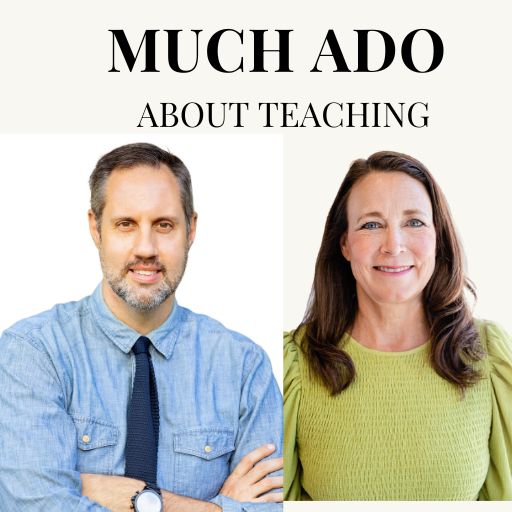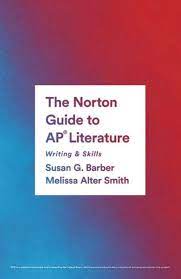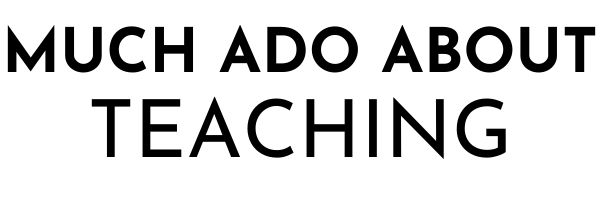This post is written by Eric Rovie from Brookwood High School in the Atlanta area. While Eric framed these materials for an AP class, they will work for English classes in general. For more on Eric, check out his bio at the end of the post.
In the AP Lit CED, Unit 4 is a return to short fiction (which was also Unit 1) after doing a poetry unit and a longer fiction unit. My own AP Lit course doesn’t follow the CED planning guide directly-I work short fiction and poetry in with longer works, and vice versa. But this mini-unit (which covers 8-10 days) focuses on a theme that falls out of Cormac McCarthy’s The Road and works as a standalone mini-unit.
The following skills from the CED are utilized in this unit.
CHR 1-A. What do specific textual details reveal about a character, that character’s perspective, and that character’s motives?
CHR 1-C. Explain the function of contrasting character.
CHR 1-D. Describe how textual details reveal nuances and complexities in character’s relationships with one another.
SET 2-B. Explain the function of setting in a narrative.
SET 2-C. Describe the relationship between a character and a setting.
STR 3-A. Identify and describe how plot order events in a narrative.
STR 3-D. Explain the function of contrasts within a text
NAR 4-A. Identify and describe the narrator or speaker of a text.
NAR 4-B. Identify and explain the function of point of view in a narrative.
NAR 4-C. Identify and describe details, diction, or syntax in a text that reveal a narrator’s or speaker’s perspective.
LAN 7-B. Develop a thesis statement that conveys a defensible claim about an interpretation of literature that may establish a line of reasoning.
Texts and supplements
For this mini-unit, we read the following short stories by Raymond Carver:
“The Third Thing That Killed My Father Off” (from What We Talk About When We Talk About Love)
“Mr. Coffee and Mr. Fixit” (from What We Talk About When We Talk About Love)
“So Much Water So Close to Home” (from What We Talk About When We Talk About Love)
“A Small, Good Thing” (from Cathedral)
We also read this essay:
“My Father’s Life” (from Selected Essays)
And this poem:
“The Trestle” (from Where Water Comes Together With Other Water)
*with the exception of “The Trestle”, all of these can be found in Carver: Collected Stories published by The Library of America.
Supplements:
-Short Cuts by Robert Altman. This film is R-rated, and some of it can’t be shown in class (nudity, drug use, and language), but with some creative fast-forwarding and use of the skip button, the story from “A Small, Good Thing” can be presented to students without any objectionable content.
-“Everything’s Turning To White” by Paul Kelly and the Messengers. This song, from Australian singer-songwriter Paul Kelly’s 1989 album So Much Water So Close to Home present’s “So Much Water So Close to Home” as a folk song.
-Voice Lessons by Nancy Dean. I use this workbook as the framing device for text analysis all year. My students are already familiar with Dean’s five elements of voice (detail, diction, imagery, syntax, and tone) when we start this unit.
Schedule. Days where students are asked to “read” can be in-class reading or homework. For some of those days, I had other things going on (MC practice, conferences on essays) but I try to give 1 day a week for students to read assigned work in class.
Day 1: read “The Third Thing that Killed My Father Off”
Day 2: Discuss setting
Day 3: read “The Trestle” and “Mr Coffee and Mr Fixit”; discuss character and narration
Day 4: read “My Father’s Life”; VENN for themes
Day 5: read “A Small Good Thing”, annotating for elements of voice
Day 6: groups annotate for DETAIL and IMAGERY
Day 7: groups annotate for SYNTAX and DICTION
Day 8: watch Short Cuts
Day 9: read “So Much Water”; QQV
Day 10: discuss, Paul Kelly song
Background and framing the unit.
I’m a fan of Raymond Carver. The brevity and subtlety of his work is very useful in an AP Literature class, as is his ability to tell a story that is not based primarily on a big, shocking event. His stories “Cathedral” and “Viewfinder” are frequently analogized, and Thomas Foster mentions “Cathedral” specifically in the communion chapter of How to Read Literature Like a Professor. Carver’s stories and characters, usually found in Washington state in the 1970’s and 1980’s, occasionally display elements of systematic racism (there are casual mentions of Dummy’s wife “running around with Mexicans” in “The Third Thing That Killed My Father Off” and the dated use of the word Negro as a category in “A Small, Good Thing”) that might need to be framed or scaffolded, as older stories often do, but these stories offer small windows into the lives of characters that are insightful and compelling.
I move into this unit after we read Cormac McCarthy’s The Road, with one of the thematic elements of our discussion of that book centered around the relationship between the Man and the Boy, which dovetails into discussion of fathers and sons (and parent-child more generally). I use that focus to spin into these Carver stories, the first few of which are about fathers and sons.
“The First Thing…”
We start with “The Third Thing That Killed My Father Off”. I ask the students to read it and annotate with a focus on SETTING. Our discussion of the text turns from setting (which is crucial to the story) to character. In particular, I try to get them to recognize that when Dummy fences off his bass-stocked pond, he’s built a literal and figurative wall between himself and his friends. We move into tone, and the goal is to get them to identify how the setting and character behaviors influence the tone. I use these discussion questions:
Discussion Questions for “The Third Thing That Killed My Father Off” by Raymond Carver
- What is the theme of the story?
- How does Carver use SETTING to support the theme?
- What is the narrative style of the story?
- How does Carver use indirect characterization to build the following characters:
- The narrator’s father
- Dummy
- Dummy’s wife
- The narrator’s mother
- There is a heavy emphasis on relationships in the story: identify two relationships that are explored in the story.
Compare and Contrast
I next have them read the poem “The Trestle” and the short story “Mr. Coffee and Mr. Fixit” in tandem with Carver’s essay “My Father’s Life.” I ask them to read and annotate generally, without a specific focus, in order to make the discussion task more effective. After the read, I break them in four groups, each group pairing two of the four stories we’ve read. I ask the groups to identify similarities between their paired stories, along with obvious differences. I make a four-way Venn diagram on the board and we work through the paired stories until we find something that ties them all together in the middle. (PHOTO ATTACHED)
A Small, Good Thing
I ask the students to read this in advance and annotate for four of the five elements of voice: Detail, Diction, Syntax, and Imagery.
When we meet to discuss, we spend two days on the story. I print a new copy of the story and break students into 13 groups (the story prints onto 13 pages). I ask them, on day 1, to read together in groups and annotate for DETAIL and IMAGERY. After giving them about 20 minutes to do this, I project each page onto the screen and ask groups to share a few examples. Along the way, I also through a few more general questions at them (“what did we learn about the characters here” or “how are relationships developed or changed here”) as well. I collected their annotated pages to use the next day.
One day two, I give them back their pages (same groups) and ask them to annotate using different colors looking for DICTION and SYNTAX. We use the same discussion format with this task.
** Bonus option. I showed students the scenes from Altman’s Short Cuts that correspond to this story beforehand. One of the additional questions I ask them is how the film and story differ and how that impacts the development of plot and theme. One notable example is the insertion of the character of Howard’s father (played by Jack Lemmon) in the film when he does not appear in the story.
So Much Water So Close to Home
I gave students this story and asked them to read it before class. I also gave them a short writing task (QQV) to complete for our discussion. They could handwrite it and turn it in or submit via Google Classroom. This is the prompt:
“So Much Water So Close to Home” QQV activity
Read and annotate Raymond Carver’s short story “So Much Water So Close to Home”. Complete the following for submission (turn in handwritten or typed response) on Thursday 11/18.
QUESTIONS. Come up with a high level discussion question for the story. This should not be a retention or plot based question, but a big-picture question that speaks to the theme or purpose of the story.
QUOTES: Identify TWO significant quotes from the story and list them. Explain why you think these quotes are significant.
VOICE: What element of voice (Detail, Diction, Imagery, Syntax, Tone) stands out the most to you in this story? Give examples of how it stands out.
We use the quotes and discussion questions to frame the analysis of the story, focusing on the narrative perspective of Claire, the wife.
Paul Kelly’s song “Everything’s Turning to White” can also be included here as an additional way of approaching the story.
SYNTHESIS (Possible Summative assignment)
“Raymond Carver made poetry out of the prosaic. One critic wrote that he ‘revealed the strangeness concealed behind the banal,’ but what he really did was capture the wonderful idiosyncrasies of human behavior, the idiosyncrasies that exist amid the randomness of life’s experiences.”
“I look at all of Carver’s work as just one story, for stories are all occurrences, all about things that just happen to people and cause their lives to take a turn. Maybe the bottom falls out. Maybe they have a near-miss with disaster. Maybe they just have to go on, knowing things they really don’t want to know about one another. They’re more about what you don’t know rather than what you do, and the reader fills in the gaps, while recognizing the undercurrents.”
-Robert Altman, from “Collaborating with Carver,” the introduction to the collection Short Cuts: Selected Stories.
For a final writing assignment, if required, offer students this quote from Robert Altman and ask them to explain, using the Carver works we have read, what Altman means.
Eric Rovie teaches AP Literature, AP Language, and 10th Grade Gifted Language Arts at Brookwood High School in Snellville, GA. He also works for Gwinnett County Public Schools as a Gifted Endorsement instructor, training GCPS teachers to teach gifted students. He is also a veteran AP Literature Reader, a participant in 2020’s AP Literature Pilot Reading, an AP Literature Consultant for the College Board, and an AP English consultant for the Georgia Department of Education. He coaches both varsity swim and varsity track and field for Brookwood. Previously, he was a professor of philosophy and religious studies at Webster University, Georgia State University, Agnes Scott College, Georgia Perimeter College, and Saint Leo University, and has published book chapters and articles on topics in ethics, the history of philosophy, and political theory. Eric has also worked as a staff writer for The Onion, The AV Club, PopMatters, and Chunklet.




















